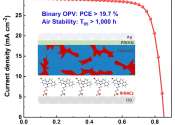Swedish research project makes several advancements toward the autonomous airport of the future
A three-year research project at Mid Sweden University has made several advancements in creating the airport of the future with safe and cost-effective solutions, including autonomous measurements of the runway surface as ...
Apr 24, 2024
0
1









